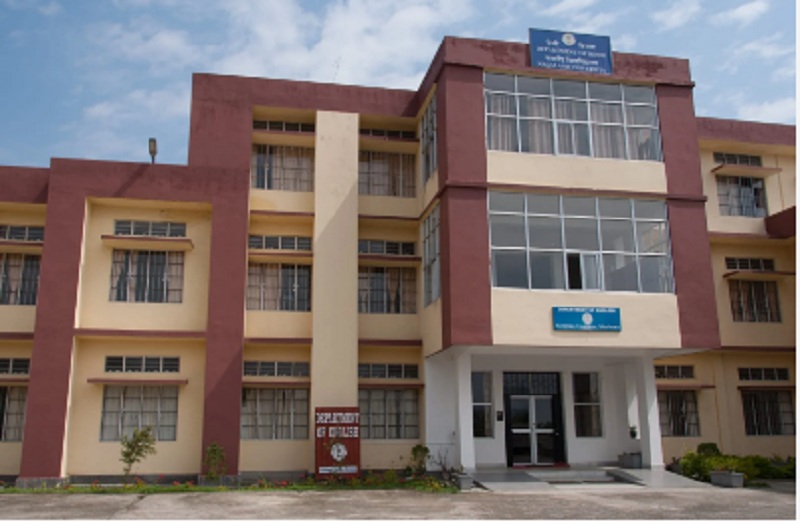Kohima: Nagaland University is leading a research project to identify “potentially dangerous glacial lakes” in Sikkim and Arunachal Pradesh as part of a climate change mitigation initiative.
Three high-altitude lakes — two in Arunachal Pradesh and one in Sikkim — have been shortlisted for the study to assess the flood potential posed by glacial lakes in the region.
The researchers intend to identify ‘Potentially Dangerous Glacial Lakes’ using high-resolution data and analyse geomorphology, permafrost degradation and slope instability in the Tawang region of Arunachal Pradesh and in the Lachung basin of north Sikkim under two separate projects.
The project will include bathymetric surveys — detailed underwater mapping — and 2D/3D flood modelling to quantify the risk from sudden glacial lake outburst floods (GLOFs).
Bathymetric surveys are specialised hydrographic surveys that map the depths and shapes of underwater terrain. The process provides detailed information about the underwater topography of a water body.
The project also seeks to identify ecological risks, knowledge gaps and ecosystem services related to high-altitude lakes under the contemporary climate change, as well as the assessment of stored fresh water resources.
A GLOF refers to a sudden flood caused by the rapid release of water from a glacial lake, typically following the collapse of a moraine or ice dam. Triggers include accelerated glacial melt due to climate change or seismic activity, often resulting in catastrophic downstream damage.
The research findings will be shared with policymakers and planners to guide safer development near riverbanks and mitigate the devastating impacts of potential GLOF events.
This project, led by the varsity’s Assistant Professor, Department of Geography, Dr Manasi Debnath, who is the Principal Investigator, is funded by the Union Ministries of Earth Sciences and Environment, Forest, and Climate Change.
Co-principal investigators include Dr. M.C. Sharma (Jawaharlal Nehru University), Dr. R. Kumar (Sikkim University), Dr. M.S. Sarkar (G.B. Pant National Institute of Himalayan Environment, Itanagar), and Dr. P. Kumar (Scientist and group head, Inter-University Accelerator Centre, Delhi). Samikcha Rai, a PhD scholar and junior project fellow at Nagaland University, is also on the research team.
Highlighting the need for such studies, Nagaland University Vice-Chancellor, Prof Jagadish K Patnaik, said: “Nagaland University takes great pride in leading a critical research initiative aimed at developing a detailed and near-accurate inventory and stability assessment of high-altitude lakes in the Sikkim and Arunachal Himalayas.”
“This will help save lives and infrastructure by shifting from post-disaster response to proactive risk reduction,” said a statement issued by the university.
Dr. Debnath said the project will assess breach potential, flood discharge volume, and downstream impacts of glacial lakes using high-resolution satellite imagery and field validation.
ALSO READ: Nagaland, Manipur on high alert as Assam’s eviction drive sparks influx fears
The National Remote Sensing Centre (NRSC) has mapped over 7,500 glacial lakes across India since 2011 using satellite remote sensing. The National Disaster Management Authority (NDMA) has flagged 195 of these as high-risk and potentially susceptible to GLOF events.















